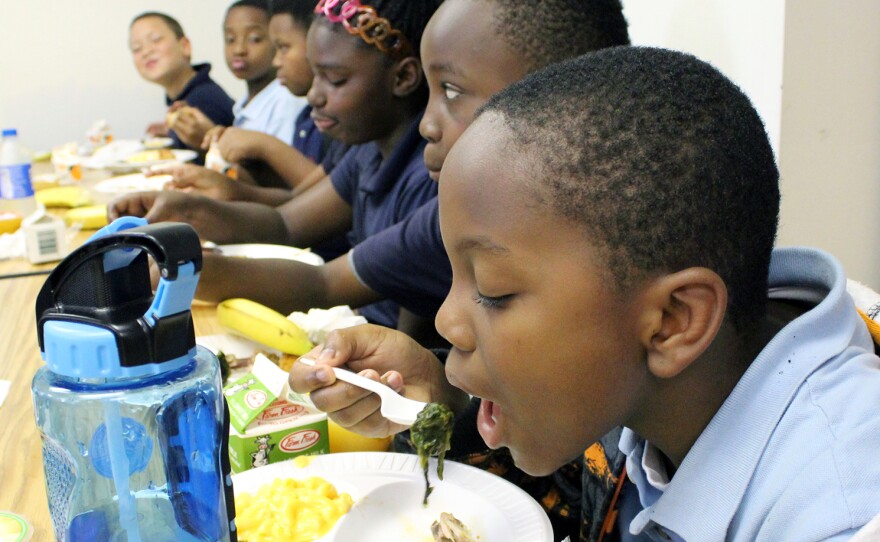A single school is like an entire community.
You've got the mayor, or principal. There is the general population, the students and their parents. There's a grocery store in the form of a cafeteria. And the teachers are kind of like doctors and police officers rolled into one. Within that batch of characters, there are gossips and scofflaws; actors and judges; even engineers and critics.
A single school can tell us a lot about the health of the community in which it exists. It can also tell us a lot about how systemic problems with transportation, food, housing and crime adversely impact impoverished communities and the health of the people who live there.
To put this theory to the test, we went toNorth Side Community Schoolin north St. Louis. It's an elementary charter school that primarily serves students within a three-mile radius of the building. The school itself has an impressive academic track record, consistently scoring higher on state standardized tests than other charter schools, and exceeding the performance of St. Louis Public Schools.
It's managed to achieve this success even though the students who go to North Side face some serious challenges. They live in crime-riddled neighborhoods and in housing that is often sub-standard. Every student who attends the school receives free or reduced lunch, an indication of their family's poverty.
The fact is all of those elements of the students' lives end up affecting their health and, consequently, their ability to learn and thrive and, ultimately, their chance of living a long, fruitful life. The Centers for Disease Control has been studying the connections for years. And The For Sake of All report, which we discussed inour last podcast, shows how the St. Louis region's well-being is impacted by the adverse conditions that many children live in.

The challenges play out in very real ways for North Side students, their parents and the communities in which they live. In the podcast, we spend time hearing the stories of how the students are coping with sub-standard housing, limited access to healthy food, and lack of transportation among other things.
As you listen to the podcast, you can read up on some facts about the area in which North Side Community School is located.
Hunger and obesity
The North Side Community school is run by Stella Erondu — she's the mayor, if you will. She is very familiar with her students and their families and all the challenges they face. When it comes to food and hunger, for example, she is very aware that her students often come to school hungry.
"We have not ever gone to them and said, 'Did you eat dinner last night?' And I don't think we should," Erondu said. "The kids will talk with me. They will tell me. Some kids will say 'I want seconds, I want thirds.' And they do get them. And that's a sign that they didn't eat dinner at home."
Yet despite the problem of being hungry, the percentage of people in the surrounding neighborhood who are overweight or obese is as much as 15 points higher than the St. Louis average. How can that be? The food they are eating is not nutritious, but is high in calories and fat.
Housing and dangerous neighborhoods
Another problem that students and their families have to cope with is sub-standard housing. We're talking houses with leaky roofs, no water, mold and crumbling walls. Erandu described going to one parent's house to check on the students. She said the house was spotless, but she could smell the mold.

Another parent, Traci Haines, recently moved from a house that her family owned outright because the physical structure of the house wasn't sound. There was a spot on the ceiling above Haines' bed that had a large, soft dark color.
"It looks like mold. It was leaking and eventually, I thought that's going to fall and I was thinking of us sleeping there," Haines said.
She left the house, abandoned it, really, and is now paying rent in a much smaller apartment, but one that doesn't have physical problems that threaten her family's health.
There are direct physical consequences to living in those conditions, the most common being asthma which affectsnearly 20 percent of the city's children. But when you combine poor housing with inadequate food and ongoing violence, you have a recipe for raising a generation of children whose ability to learn and grow into healthy adults is difficult no matter how amazing their parents are.










